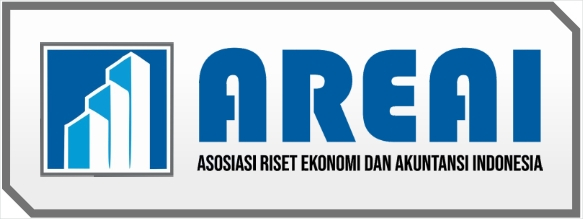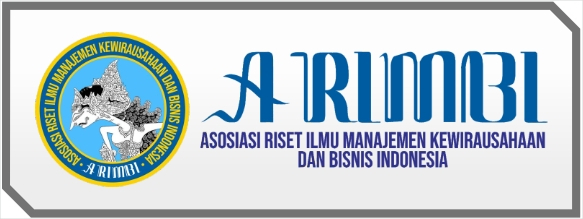ANALISIS PENGARUH KUALITAS SISTEM DAN KUALITAS LAYANAN SHARED SERVICES CENTER HUMAN CAPITAL DAN PROCUREMENT MELALUI DYNAMIC CAPABILITIES VIEW TERHADAP VALUE CREATION
DOI:
https://doi.org/10.55606/jaemb.v4i1.2984Keywords:
system quality, service quality, shared services center, human capital, procurement, value creation, dynamic capabilities viewAbstract
This research was conducted to assess the value creation that can be obtained by companies by using the system quality and service quality of the Shared Services Center Human Capital and Procurement to support the company's business processes both financially and strategically, being able to separate the roles of supporting functions that have competence, capability and technical mastery high in assisting routine, repetitive and high-volume work processes as well as being effective and efficient in separating tactical and low-value tasks from strategic and higher-value tasks, so as to increase the company's dynamic capabilities view in implementing strategic management and capabilities organization to adapt to rapid and dynamic changes in the market environment and be able to provide services to internal and external customers in an end-to-end process, cost-effective, flexible and of high quality. Hypothesis testing in this research uses primary data by distributing questionnaires using non-probability sampling with a purposive sampling technique to 240 respondents from 5.298 all SSC Human Capital and Procurement service users using a Structural Equation Model approach based on Partial Least Square with the smartPLS version 3.0 program.
References
A.w. Colombo, S. K. and T. B. (2016). Towards the next generation of industrial Cyber-Physical Systems. Ind. Cloud-Bases Cyber-Physical Syst. IMC-AESOP Approach, 9783319056, 1–22.
Abdillah, W. dan J. (2014). Konsep & Aplikasi PLS (Partial Least Square) untuk Penelitian Empiris. BPFE.
Ambrosini, V., & Bowman, C. (2009). What are dynamic capabilities and are they a useful construct on strategic management? International Journal of Management Reviews, 11(1), 29–49.
Augusty Ferdinand. (2006). Metode Penelitian Manajemen. Universitas Diponegoro.
Barney, J. B. (1991). Firm resources and sustained competitive advantage. Journal of Management, 17(1), 19–120.
Bergeron. (2003). Essentials of Knowledge Management.
Boukhris, H. S. dan S. (2019). Shared Services Centers: A Systematic Literature Review.
Budi Sitorus, T. I. H. S. dan P. R. (2016). Evaluasi Manajemen Sistem Informasi Dan Teknologi Informasi Pelabuhan.
Burns, Timothy J. dan Yeaton, K. (2008). Success Factors for Implementing Shared Services in Government. IBM Center for the Business of Government.
C Helfat, et. al. (2006). Dynamic capabilities. Resource-based change in organizations. MA: Blackwell.
Cash, James I., Warren F. McFarlan, and J. L. M. (1996). Corporate Information Systems Management. Business One Irwin.
Cespedes, F. V. (2014). Aligning Strategy and Sales: The Choices, Systems, and Behaviors That Drive Effective Selling. Harvard Business Review Press.
Chase, R. B., Jacobs, F. R., dan Aquilano, N. J. (2006). Operations Management For competitive advantage, 9th ed. McGraw-Hill.
Cooper, R & Kaplan, R. S. (1988). How Cost Accounting Distorts Product Costs. Management Accounting, 20–27.
Curry, J. (2016). Shared Services in the Public Service. Public Sector Accountancy Irelan. 48(2).
Cynthia J. Davis dan J. David Ross. (2008). Shared Services: Adding Value to the Business Units.
Daellenbach, H. (2005). Management Science, Decision Making Through Systems Thinking. Palgrave Macmillan.
Deloitte. (2018). The Future of Shared Services is Intelligent. Digital Media: Rise of On-Demand Content, 5–7.
Delone, W. & McLean, E. (2003). Model Of Information Systems Success: A TenYear Update. Journal Of Management Information Systems, 19, 10–15.
DeLone, WH., M. (2016). Information Systems Success Measurement. Foundations and Trends in Information Systems, 2(1), 1–116.
Direktorat Jenderal Perbendaharaan. (2018). Digitalisasi Pengelolaan Keuangan Negara. Treasury Policy Brief, 1–3.
E. Vionna. (2019). Analisis Strategi Implementasi Shared Services Center di PT Pertamina (Persero). Universitas Gadjah Mada.
Fandy, T. dan G. C. (2005). Service, Quality & Satisfaction. Andi.
Gartner. (2018). The Future of Workforce Management and Shared Services in Europe.
Ghozali, Imam, H. L. (2015). Konsep, Teknik, Aplikasi Menggunakan Smart PLS 3.0 Untuk Penelitian Empiris. BP Undip.
Hair, et al. (2014). Multivariate Data Analysis, New International Edition. Pearson Education Limited.
Harjowiryono, M. (2019). Analisis faktor-faktor yang memengaruhi kepatuhan bendahara pemerintah dalam penyetoran pajak. Indonesian Treasury Review: Jurnal Perbendaharaan, Keuangan Negara Dan Kebijakan Publik, 4(3), 195–217.
Hasanah. (2019). Analisis Usability Integrated Academic Information System Menggunakan Metode Use Questionnaire. Seminar Nasional Teknologi Informasi, Komunikasi Dan Industri, 49–54.
Helfat, Constance E. and Peteraf, M. A. (2003). The Dynamic Resoruce-Based View : Capability Lifecycles. Strategic Management Journal, 24, 997–1010.
Henseler, J., Ringle, C. M., & Sarstedt, M. (2015). A New Criterion for Assessing Discriminant Validity in Variance-based Structural Equation Modeling. Journal of the Academy of Marketing Science.
Ho, C., & Lee, Y. (2007). The development of an e-travel service quality scale. Tourism Management, 28, 1434–1449.
Hooley, P. & N. (1992). Marketing Strategy & Competitive Positioning. Fifth. Pearson Education Limited.
Huang, H., Gartner, G., M.Krisp, J., Raubal, M., & Van de Weghe, N. (2019). Location based services : ongoing evolution and research agenda Location based services : ongoing evolution and research agenda. Journal of Location Based Services, 0(00), 1–31.
Hussein, A. S. (2015). Penelitian Bisnis dan Manajemen Menggunakan Partial Least Square (PLS) dengan smartPLS 3.0. . Fakultas Ekonomi dan Bisnis Universitas Brawijaya.
Hutahaean. (2015). Konsep Sistem Informasi. Deepublish.
Jogiyanto. (2017). Teori Portofolio Dan Analisis Investasi. Edisi. Kesepuluh. BPFE.
Jogiyanto, H. M. (2007). Metode Penelitian Bisnis: Salah Kaprah dan Pengalaman–Pengalaman (BPFE).
Kaehler, C., Busatto, F., Becker, G. V., Hansen, P. B., & Santos, J. L. S. (2014). Relationship between Adaptive Capability and Strategic Orientation: An Empirical Study in a Brazilian Company. IBusiness, 06(01), 1–9. https://doi.org/10.4236/ib.2014.61001
Kotler, P. (2008). Manajemen Pemasaran Edisi 12 Jilid 2. Indeks.
Kristianto, A. (2018). Perancangan Sistem informasi dan Aplikasinya. Gava Media.
Liu, T.-C. and L. W. W. (2007). Customer Retention and Cross Buying in the Banking Industry : An Integration Of Service Attributes, Satisfaction and Trust. Journal of Financial Service Marketing, 12(2), 132–145.
Mary C. Lacity, L. P. W. (2016). a new approach to automating services.
Mary Driscoll. (2005). Mining for Corporate Gold.
Mehmet Akif Demircloglu. (2021). Shared Service Centers: A New Opportunity for Public Sector Management.
Nisula, A.-M. and Kianto, A. (2016). The role of knowledge management practices in supporting employee capacity for improvisation. International Journal of Human Resource Management, 27.
Norton, & Kaplan. (1990). Konsep Balanced Scorecard. Harvard university.
Novita S Lausu, Mohammad Agus Salim Monoarfa, D. L. R. (2022). Pengaruh Sistem Informasi manajemen dan lingkungan kerja terhadap kinerja pegawai. Fakultas Ekonomi Universitas Negeri Gorontalo.
Nurazila. (2018). Sistem Informasi Penerimaan Kas Pada Pendapatan Rawat Inap Pada Rumah Sakit Umum Daerah Massenrempulu. Sistem Informasi Akuntansi, 70.
Ohno, T. (1950). The Toyota Production System: Beyond Large-Scale Production. Productivity Press.
Porter, Michael E., and M. R. K. (2011). The Big Idea Creating Shared Value. Harvard Business Review.
Porter, E. M. (1985). Competitive Advantage-Creating and Sustaining. SuperiorPerformance. Free Press.
Pramia, S. dwi. (2022). Hubungan Tingkat Pengetahuan Patient Safety Dengan Kepatuhan Penerapan Ssc (Surgical Safety Checklist) Di Kamar Operasi Rs Permata Bunda Malang. Sekolah Tinggi Ilmu Kesehatan Widyagama Husada.
PwC. (2020). The Power of Intelligent Automation in Shared Services.
Richter, Philipp and Brühl, R. (2019). Shared Service Implementation in Multidivisional Organizations - A Meta-Synthesis Study. Journal of General Management, 46(2), 73–90.
Rosenkopf, L. dan Nerkar, A. (2001). Beyond Local Search: Boundary-Spanning, Exploration, and Impact in The Optical Disk Industry. Strategic Management Journal, 22, 287–306.
Santoso, S. (2014). Statistik Parametrik Konsep dan. Aplikasi dengan SPSS. PT. Elex Media Komputer.
Staber, U., & Sydow, J. (2002). Organizational Adaptive Capacity. Journal of Management Inquiry, 408–424.
Strikwerda. (2014). Understanding the HRD Role in MNCs:The Imperatives of Social Capital and Networking. Sage.
Sugiyono. (2019). Metode Penelitian Kuantitatif, Kualitatif, dan R&D. Alphabet.
Sujarweni, W. (2014). Metodologi Penelitian. Pustaka Baru Press.
Sum, F. F., de Paula, I. C., Tortorella, G., Pontes, A. T., & Faco, R. T. (2018). Analysis of the Implementation of a Lean Service in a Shared Service Center: A Study of Stability and Capacity. IEEE Transactions on Engineering Management, 672, 334–346.
Sutabri, T. (2012). Analisis Sistem Informasi. Andi.
Tawar, A. F. S. dan Y. S. S. (2022). Model HOT FIT dalam Manajemen Sistem Informasi.
Teece, Pisano, dan S. (1997). Dynamic Capabilities and Strategic Management. Strategic Management Journal, 18(7).
Urbach, N., & Müller, B. (2012). No Title. The Updated DeLone and McLean Model of Information Systems Success, 1–18.
Wang, D. C. L. & A. (2007). Dynamic Capabilities: A Review and Research Agenda. The International Journal of Management Reviews, 9(1), 31–51.
Zahra, Shaker A, and G. G. (2002). Absoprtive Capacity: A Review, Reconceptulisation, and Extension. Academy of Management Review, 17(2), 185–203.
Zollo, M. and S. . W. (2002). Deliberate Learning and The Evolution of Dynamic Capabilities. Organization Science, 13(3), 339–351.
Downloads
Published
How to Cite
Issue
Section
License
Copyright (c) 2024 Jurnal Akuntansi, Ekonomi dan Manajemen Bisnis

This work is licensed under a Creative Commons Attribution-ShareAlike 4.0 International License.















